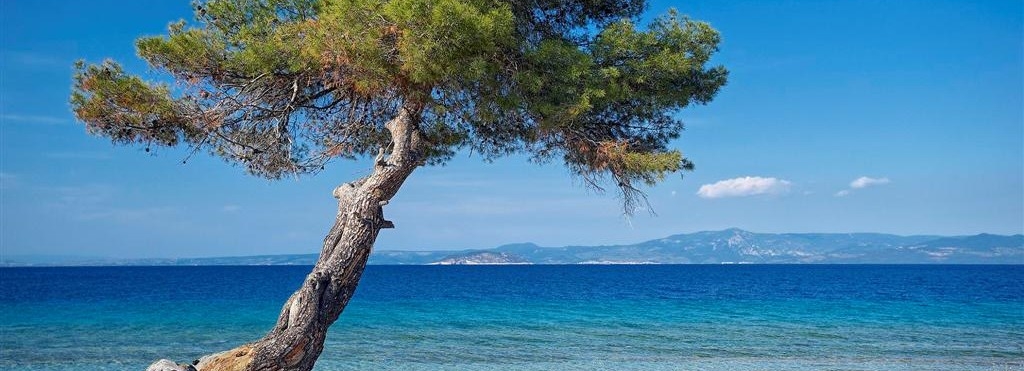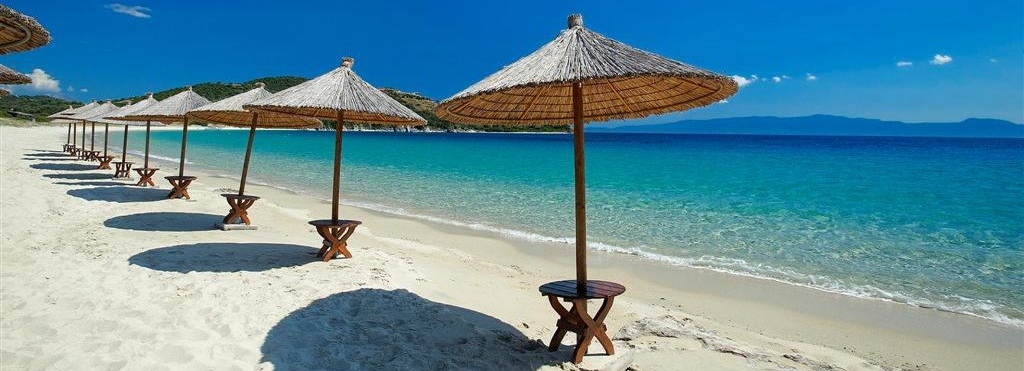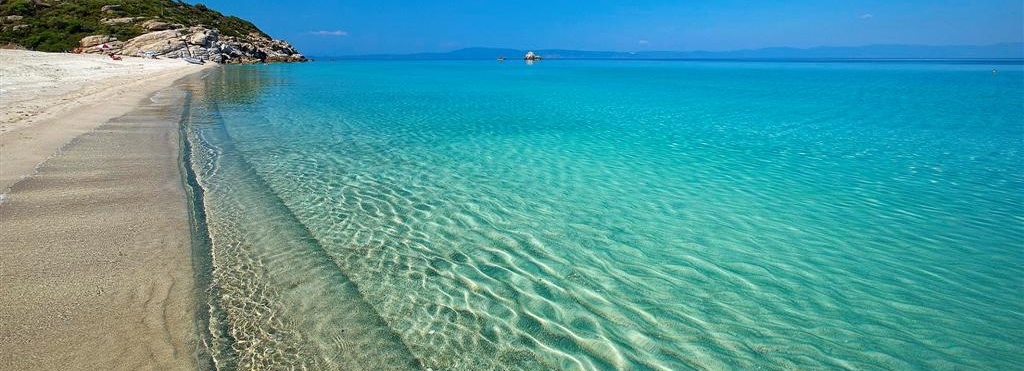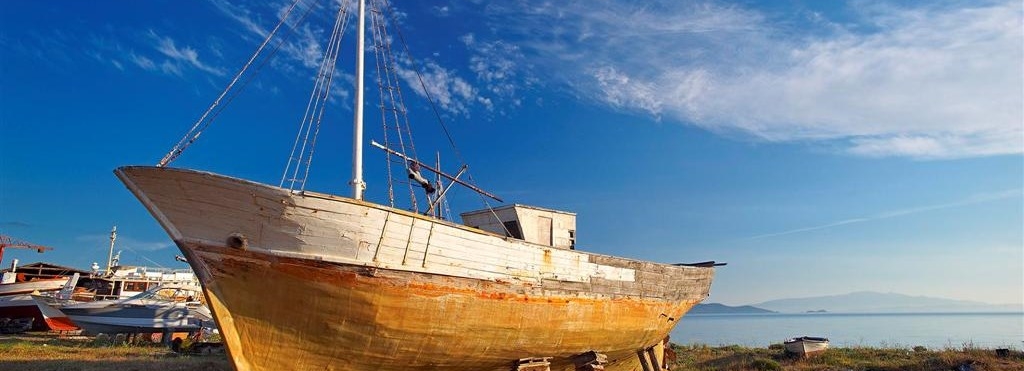Super User
Dochiariou Monastery
TENTH MONASTERY
On the west side of Mt. Athos and at an altitude of 30 meters above sea level, between the monasteries of Xenophon and Zografou we find the monastery of Dochiariou. Tradition mentions that this holy monastery was founded by monk Euthymius, student of Blessed Athanasius Athonite. Euthymius after becoming a monk and manciple at Lavra founded this new monastery on the southwestern side of Athos, a monastery which took its name from its founder deaconship. The monastery is cited in documents from Mt. Athos in early 11th century, while its course resembles that of other monasteries. After a period of flourishing, during the 11th and 12th centuries, it will suffer from pirate raids and the pogroms by the Latin invaders and those in favor of the Unification of Churches. This period of decline will be interrupted in middle 16th century, when Father George from Adrianople became a monk in this almost deserted monastery and devoted his life to its restoration. He was assisted in this great project by prince of Moldova-Wallachia Alexander and his wide Roxandra, who donated considerable amounts of money and estates, thus lending a new lease of life to the monastery. Father George was also assisted by the Metropolite of Moldova Theofanis, who, at the end of his life, resigned from office and lived there as an anchorite. The Catholicon of the monastery is dedicated to Archangels Michael and Gabriel. Amongst the ten chapels in the monastery’s courtyard prominent is the chapel of Our Lady Gorgoipekoos with the homonymous miracle working icon, one of the most celebrated icons in all Mt. Athos. Due to the courtyard’s limited space, the Catholicon of the monastery is elevated and a work dating back to the 16th century. It was illustrated in 1568 by Cretan painter Tzortzis but was repainted in 1855, thus depriving us of an important part of its original frescoes.
Zografou Monastery
NINTH MONASTERY
Built in late 10th century, the Holy Monastery Zografou is one of the oldest on Mt. Athos. It is secluded deep in the forest at an altitude of 160 meters, one hour away from the beach and near a gorge. According to tradition it was founded by three brother-monks, whose descent was from the area of Achrida: Moses, Aaron and Ioannis, who took their monastic vows on Holy Mt. Athos in the 9th century, during the reign of Emperor Leon VI the Wise. Various documents cite the existence of the monastery from late 10th century onwards. Its fate was that of many other cardinal monasteries, a period of flourishing followed, in the 13th century, by a period of hardship and destruction , principally due to the pirate raids, while later, during the reign of Michael VIII Palaeologos and Andronicus a second period of flourishing is observed. Its monks were prosecuted during the reign of Michael VIII, known for his pro-Unification policy, when Patriarch Ioannis Beccus was at the Patriarchic Throne. The monks of Zografou fiercely opposed the Emperor and Patriarch’s unification attempts and tradition mentions that 26 of them, who stayed true to Orthodoxy, were tortured and martyred in February 1276, while the monastery was burned. In the 14th century the monastery will benefit from the assistance by princes of the Danubian Provinces and especially Stephen V Voivod of Moldova-Wallachia and Stephen VI the “Good” who will renovate is Refectory in 1495. Since its foundation the monastery has a tradition of accepting monks from Bulgaria, a tradition that continues until today. Its Catholicon celebrates Great Martyr St. George and has 14 chapels, of which 3 are illustrated. The church was build and illustrated in late 18th century. Special note must be made of its woodcut icon screen and altar, prime examples of woodcutting on Mt. Athos. The library of the monastery is located in the Tower and possess 550 manuscript codices of which 162 in Greek and 388 in Slavic. It also includes of more than 17.000 printed volumes. Its treasures include relics of Saints and miracle working icons, as well as historic documents of great value. Still surviving in the area of the monastery is the hut where Cosmas of Aetolia the Great apostle of our nation and holy martyr led an ascetic’s life.
Xiropotamou Monastery
EIGHTH MONASTERY
To the east of the monastery of Agios Panteleimon and to the west of that of Simonopetra, at a distance of roughly 200 meters from the sea in the middle of the southwestern side of the peninsula of Athos and amidst a verdurous landscape we find the beautiful, imposing and cardinal monastery of Xiropotamou, at the place of once ancient Charadria. Its foundation is essentially placed at the end of the 9th century, just prior to the erection of the monastery of Megiste Lavra. But the Athonian tradition holds that this monastery is even older, attributing its foundation to Empress Pulcheria, in the 5th century AD. Other sources cite Emperors Constantine VI Porphyrogennetus and Romanus I Lecapenus as the monastery’s founders, in early 10th century. But the most widely accepted version is that which considers the monastery to have been founded by monk Blessed Paul of Athos, a contemporary of Blessed Athanasius Athonite. The original name of the monastery was “the monastery of the Holy Forty” but also of “St. Nicephorus”. Up until the 13th century the Monastery prospered and evolved, but was later faced with destruction from pirate raids and fires. However it was greatly assisted by Emperors Michael VII and Andronicus II and was also favored by Sultan Selim I, According to tradition monks from Xiropotamou, or Xeropotamou whilst on tour to collect money to help rebuild their destroyed monastery were welcomed by the Ottoman Sultan Selim I in Alexandria in Egypt. Selim, in his campaign against Egypt was impressed by the faith and morale of the monks from Mt. Athos and issued a special instrument, the Hati-Serif by which special privileges were extended to all monasteries on Mt. Athos and especially to the monastery Xiropotamou which he also restored. The Catholicon of the monastery celebrates the Forty Holy Martyrs.
Pantokrator Monastery
SEVENTH MONASTERY
The Holy Monastery Pantokratoros is built on a rock beaten by the sea, on the eastern side of the Mountain, thirty meters above the sea. The establishment of the monastery had taken place in the 13th century and two Byzantine noble officials are considered to be its founders. One of them was General Alexios, Stratopedarchis of Emperor John V Paleologos and the other was primikerios John, the Emperor’s bridegroom. According to tradition, these two men came to Athos to become monks in a small cell which later will evolve into this cardinal monastery. The initial development of the monastery will be followed by a period of economic crisis, which will become even harder during Ottoman rule. The support by the rulers of the countries on the banks of Danube and Russian Emperors will help the monastery greatly, but it will suffer from fires, the fiercest of which was that in 1773. One of the key attachments of the Monastery is the Skete of Prophet Elijah, which was founded by Russian monk Paisius Velichkovsky, who came to the Holy Mountain in 1757 at the age of 24. The Skete will evolve upon the arrival of a great number of Russian monks and will be organized in accordance to cenobitic living, in essence assuming the size and importance of a monastery. The evolution of the Skete of Prophet Elijah and the erection of new buildings without the consent of the cardinal monastery of Pantokratoros raised a legal issue in the relationship between the two institutions, an issue that was resolved in 1892 by a sigillium by Patriarch Neophytus. The monastery celebrates on the Transfiguration of our Savior and holds the seventh place in the Athonian monastic hierarchy. The Catholicon of the monastery, due to lack of space, is small and its frescoes are a prime example of the work of Macedonian School. The most important treasures of the monastery include the portable icon of Our Lady Gerontissa, a piece of the shield of Philopater Mercurius, a piece of the True Cross and the relics of many Saints. Its library contains 317 manuscripts, of which 68 on parchment and roughly 5.000 printed volumes. Due to the lack of space the Refectory is not housed in a separate building, but is located on the uppermost floor of the west wing of the monastery’s buildings.
Koutloumousiou Monastery
SIXTH MONASTERY
Southwest of Karyes and on the northeastern side of Mt. Athos, amidst the giant trees and in the verdurous hills there is the Koutloumousiou Monastery. The history of the Monastery begun in the 11th or 12th century AD, while a document dated 1169AD already cites its existence. Tradition mentions that the founder of the monastery was a Turk nobleman named Koutloumous, who having been converted to Christianity, founded the monastery and became a monk on Mt. Athos. The monastery shall pass some hard times and then receive the final blow in early 14th century, when it shall be raided by the fierce Catalan pirates. Thus, before the grave economic problems facing the monastery, Protos Isaac will cede to it, for purposes of reinforcement, in 1334 the monasteries of Stavronikita, Prophet Elijah, Anapavsa and Philalelfou. Aspiring to develop the monastery once more, in the middle 14th century, vigorous Abbot Chariton of Imbros shall travel to the lands on the banks of Danube to seek help from their rulers. One of the greatest benefactors to emerge from this quest was Romanian John Vladislav, who will support the monastery considerably. Strong ties were forged with Romania and the monastery shall become the exercise grounds for many Romanian devotees. In early 15th century the Monastery will further flourish, also due to the large number of monks, and it shall request of Patriarch Josef II to annex the deserted monastery of St. Alypius, a request that was granted in 1428 by virtue of a Patriarchal sigillum. It was at this time that the monastery reached its heyday, a period that will be followed by decline and destruction, from fires in 1497 and 1767. The Patriarch of Alexandria Matthaios II, having resigned from the throne, will help with the rebuilding of the destroyed wings. New fires will again destroy parts of the monastery in 1857, 1870 and more recently in 1980. The Catholicon of the Monastery which is dedicated to the Transfiguration of the Savior, is richly illustrated and the icon of the “Mighty Protection” of Our Lady is kept in one of its small chapels. The Skete of Agios Panteleimon is subject to the Koutloumousiou Monastery.
Dionysiou Monastery
FIFTH MONASTERY
High above the sea, on a narrow rock on the southwestern side of Athos, Saint Dionysus from Kastoria embarked in 1370AD on the grand design of establishing a new monastery. The initial group of supporters and assistants to this project were just his students, later to be joined by Emperor Alexios III Komnenos who will endow a considerable sum and an annual grand to the monastery. It is for this reason that the monastery was originally known as the “Monastery of Great Komnenos”, until the name of its founder prevailed and it thus became known as the Monastery of St. Dionysios. This policy of substantial aid was continued by the Dynasty of Paleologoi and later, during Ottoman rule, by several rulers in Moldova-Wallachia. The monastery will suffer extensive damages from a great fire in 1535 which will destroy its Catholicon. But a number of new benefactors, in the 17th century, will allow the monastery to rebuild the destroyed wings and to continue its operation. Amongst these important new benefactors some, like the Bishop of Heraklia Makarios and Ioannis Fragopoulos from Fanari will also serve as monks, dedicating themselves, as well as their fortune to the monastery. Due to its limited space, the monastery differs greatly from most monasteries on Mt. Athos. The great courtyard is here absent, as is the Phial. The monastery has many treasures and a great Library with manuscripts and printed volumes. Its treasures include the portable icon of Our Lady Akathistos. Tradition has it that this was the icon which Patriarch of Constantinople Sergius carried in procession on the walls of Constantinople during its siege by the Avars and the Slavs in 626AD. Its Catholicon celebrates the Birth of John the Baptist and is adorned by wonderful frescoes by Cretan Hagiographer Tzortzis, dating from 1547. Its library contains roughly 1.100 manuscripts, while some codices are decorated with splendid miniature paintings. Amongst the monastery’s many treasures there are Gospels, Crosses, pectoral crosses, woven vests, exquisite reliquaries, portable icons and many others.
Hilandar Monastery
FOURTH MONASTERY
In late 12th century, two Serbian monks of royal descent settle at Vatopedi monastery on Mt. Athos. They were Serb ruler Stephan Nemanja and his son and crown prince Ratsko. To these two monks, who changed their names to Symeon and Sava, Vatopedi monastery will later vest a small cell nearby, Hilandar cell, on the northeastern side of the peninsula. Using the material resources provided by the new Serb ruler Stephan II, son and brother of the two monks, Hilandar will soon evolve into a monastery, officially donated by Emperor Alexius III by a golden bull to “the Serbs as a gift eternal”. A few years later one of the founders, Sava, will become Archbishop of Serbia and the monastery will become the spiritual center of Serb Orthodoxy, annexing several smaller nearby cells. The monastery will continue to evolve and helped by Serb rulers will reach its pinnacle in the middle 13th century, when Stephen Uros Dusan was crowned king of Serbia. Dusan pious as was his wife Helen, will help the monastery greatly, as did the Byzantine Emperor Andronicus II Palaeologus. The monastery will enjoy a second heyday in the 16th century when, following the decline of many other monasteries, an Abbot from Hilandar was elected “Protos” in Karyes. Hilandar is rich in heirlooms, amongst which there are crosses with pieces from the True Cross and exquisite icons, such as that of Our Lady Tricherousa. The Catholicon of the monastery celebrates on the Presentation of Virgin Mary and was built in the 13th century. It was illustrated in the 14th century but was repainted in the 19th and as a result the great frescoes by the Macedonian School were destroyed.
Iviron Monastery
THIRD MONASTERY
On the ruins of the ancient city Kleonae, in a peaceful and tranquil landscape on the northeastern side of the peninsula of Athos stands the famous great Monastery Iviron. This holy monastery was founded by St. Ioannes the Iberian at the end of the 10th century AD, just after the monasteries of Megiste Lavra and Vatopedi. Ioannis Tornikos is cited amongst the monastery’s founders – initial benefactors, who was, prior to becoming a monk, a lord chamberlain to the court of David, Russian ruler of the area then known as Iberia (present day Russian Georgia). Tornikos will interrupt his monastic life, following a request by Emperor Basil II and will help the Emperor crush the rebellion led by General Bardas Skleros. After completing his mission, Tornikos will rejoin the monastic order and enjoying the gratitude and material help of Emperor Basil will begin building a new Monastery, close to the ruins of an older monastery, erected by Clement. This new monastery, due to the origins of its founders, shall be named Iviron Monastery (Georgian monastery) and a great number of Georgian and Russian monks will join its ranks in the first centuries of its flourishing. The monastery will soon grow, acquiring monasteries and dependencies outside of Athos until it too will face the Catalan raids and Unificationists’ pogroms in the 13th and 14th century. In 1821 the monastery participates in the national struggle by donating part of its holdings to finance the revolution. National Martyr Patriarch Gregory V became a monk here for a brief period. In its modern history the monastery will suffer extensive fire damages in 1845 and 1865 and parts of it were completely rebuilt. Its Catholicon is dedicated to the Dormition of the Mother of God. The monastery possess of many notable heirlooms and a rich library. The miracle working icon of Our Lady Portaitissa is kept in one of its 17 chapels, an icon evoking many legends and traditions. The Skete of Prodromos is subject to Iviron Monastery.
Vatopedi Monastery
SECOND MONASTERY
The establishment of the Great and Holy Monastery of Vatopedi is historically placed around 980AD. Its founders are considered to be three monks from the Monastery of Megiste Lavra who, following the orders of their Prior, St. Athanasius arrived in the picturesque area of the Mountain’s northeastern side and by joining some preexisting cells, founded the monastery. Its name is probably derived from the known tradition of the rescue of the son of Theodosius the Great, Arcadius, who scuttled near Mt. Athos and was found safe close to a brier (in Greek vatos), many of which can be found in the valley surrounding the monastery. This is the second, in hierarchical order, monastery of Athos, while in the 2nd Typikon of Athos, dating from 1046, it is already cited as second in monastery hierarchy. The monastery shall flourish greatly and will be supported by the Byzantine Dynasty of Komnenoi. However, it will later also suffer major destructions as a result of the raids by Catalan pirates as well as pogroms by the Unificationists. During the Ottoman rule the monastery will fall into decay. Under the burden of its own problems and heavy Turkish taxation, it will be forced to abandon cenobic life and adopt the idiorrhythmic organization, in parallel selling many of its estates. The monastery will flourish once more in the 18th century. With donations by Patriarchs, citizens and leaders of the regions on the banks of Danube the monastery overcame its problems and, indeed, operated, its own care and expenses, the Athonite Academy, the ecclesiastical school on Mt. Athos. The Hilandar monastery evolved from a cell adjunct to Vatopedi. At the end of the 12th century, the monastery donated the small cell of Helandari to prince of Serbia Stephan Nemanja and his son Rastko, who came to Athos to become monks under the names “Symeon” and “Sava”. The Catholicon of the monastery dates from the 10th century and is a three-cornered church with a dome. It is dedicated to the Annunciation of the Mother of God. Two sketae are subject to the monastery: the Skete of St. Demetrius, idiorrhythmic, with a very small number of huts, and the Skete of St. Andrew, which is known, on account of its size, as “Seraglio”. To the monastery belong many remarkable heirlooms and icons, the most important being its mosaics, amongst the oldest in Mt. Athos, the illustrated manuscripts and the most important treasure of the Virgin’s Holy Belt.
Great Lavra Monastery
FIRST MONASTERY
Megiste (Great) Lavra, the first and grandest of the monasteries on Mt. Athos, it has its roots in the beginnings of communal monasticism on the peninsula of Athos. Its founder was Athanasius the Athonite, who will reach the land as a monk from the monastery of Kymina on Mt. Olympus in Bithynia in Asia Minor. With the material help from his friend, Byzantine Emperor, Nikephoros Phokas, Athanasius laid the foundations of the monastery of Lavra in 963AD on the southeastern side of the land of Athos. The monastery soon grew and with the help of Phokas and his successor John I Tzimiskes it will develop and acquire many important dependencies and oblations. Soon its monks will exceed the original number of 80 for whom Great Athanasius had originally built the monastery. In the 11th century the Monastery was home to more than 700 monks with corresponding buildings and being the Athonian model of cenobitic monastic life. The history of the monastery will follow the fate befalling all of Mt. Athos. After a period of flourishing, which will last until the 14th century, it will face pirate raids and poor finances, due to excessive Ottoman taxation. Faced with this hard reality, the monastery will adopt a peculiar form of organization and will witness the dawn of the 17th century with very few monks, but still retaining its original glory. A place for the monastic seclusion of Patriarchs and Hierarchs, the Monastery of Megiste Lavra keeps in its vestry and library most notable heirlooms and treasures. The Catholicon (the monastery’s main church) is dedicated to St. Athanasius and stands as one of the most characteristic samples of Byzantine church architecture. The frescoes in the Catholicon were made by renowned painter Theofanis, of the Great Cretan School, and date from 1535, while they are amongst the greatest hagiography samples in Mt. Athos. Today Lavra is the first monastery in the hierarchical order and subject to it are the Sketae of St. Ann, Kavsokalyvia and John the Baptist, as well as the cell of Mylopotamos and also the retreats of Mikra Agia Anna, Karoulia and Katounakia. Its heirlooms include the iron rod and cross of St. Athanasius, the bag and crown of Emperor Nikephoros Phokas, a piece of the True Cross, illustrated manuscripts and many holy vessels.






